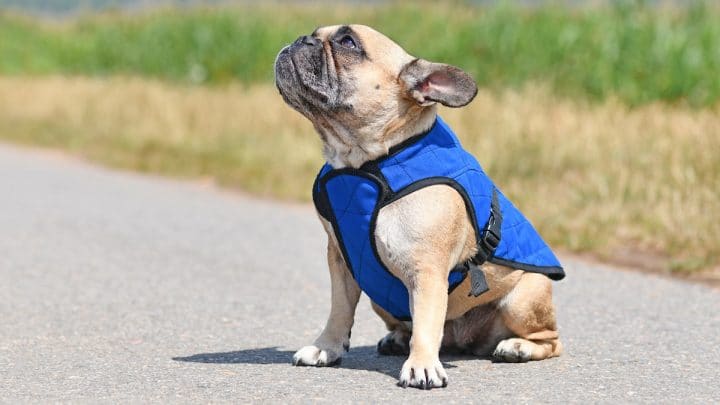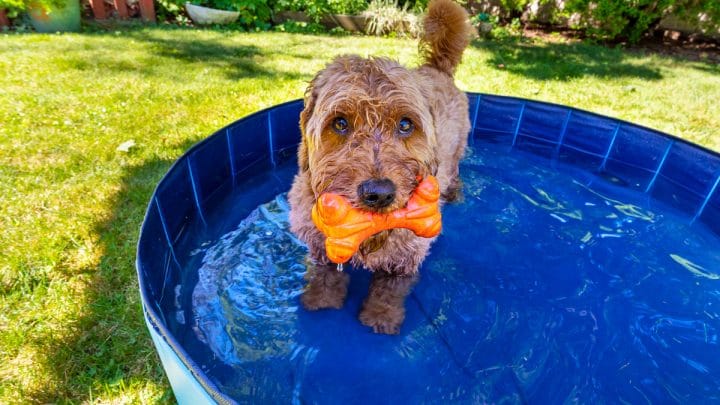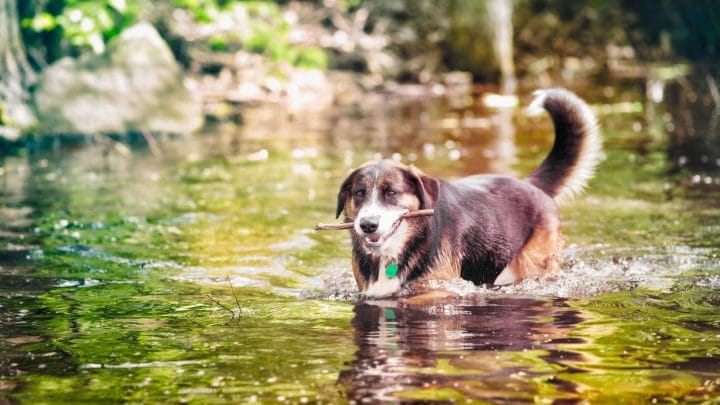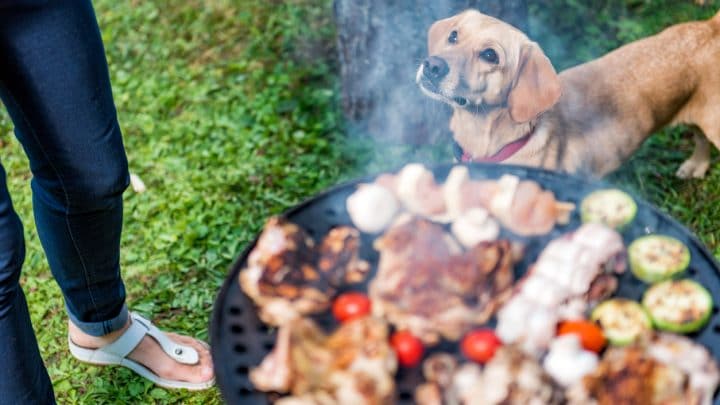As pets become a bigger part of our lives (and photo albums), it’s no surprise that many pet parents are also becoming more aware of their pets’ needs and preferences.
A recent Rover survey of 1,000 U.S. dog parents showed that fireworks are one of their biggest concerns during summer, with a whopping 71% saying their pet is afraid of fireworks. Combine that with 93% of dog parents who say they wish they knew more about how to help soothe their pet during fireworks—and it’s clear that pet parents are committed to fully understanding how to best support their pets and meet their unique needs.
Being in tune with your pets is a great way to strengthen your bond and build trust. Summer is a prime season for building those connections through things like venturing outdoors and making memories through adventures such as hiking, swimming, and backyard parties.
To make the most of your time in the sun, we’ve teamed up with pet experts to put together the ultimate summer guide. The theme? Prep. A lot of it. From sound desensitization to getting your dog used to booties, having safe days in the sun comes down to being prepared—and setting your dog up for success.
Firework Safety: Training, Medication & Management
Fireworks are beautiful but, to our pets, they are the definition of unpredictable. Our survey data supports this, with pet parents citing fireworks as the number one trigger for their dog’s anxiety.
In fact, firework anxiety in dogs ranked higher than:
This means pet parents are not alone in wondering how to help their pets. Many have tried but haven’t found the solution yet. In fact, only 16% of dog parents told us that they’ve found treats and exercise, a common tip for managing firework anxiety in dogs, helpful.
Pets with true noise phobia, however, need more than distractions on the day of. Especially if your dog is prone to bolting and staying stressed after the event, a behavior 27% of pet parents tell us they’ve witnessed in their pup. Pets need to be desensitized and taught, over time, that loud noises are nothing to be afraid of.
Firework safety on the Fourth of July
To avoid triggering their dog, nearly 30% of pet parents skip Fourth of July celebrations altogether. Another 38% plan their celebrations around their dog, so they can be at home when the fireworks go off. This aligns with what our experts recommend: Staying inside is the number one way to prevent your dog from running away, getting lost, or being injured.
Watch this video featuring Nicole Ellis, Certified Professional Dog Trainer (CPDT-KA) and Rover Pet People Panelist, on how to help keep your dog calm when you’re home with them on the big day.
If you have a highly anxious pet, you may want to ask your vet to prescribe medication to calm or mildly sedate your dog or cat during a stressful event like fireworks. A common situational anxiety med is trazodone for dogs —but your vet will ask you to test your pet’s reaction to it before prescribing more.
“A lot of my clients swear by body-hugging clothes like Thundershirts to help pets feel comforted during stressful events,” says Dr. Rebecca Greenstein, Chief Veterinarian at Kleinburg Veterinary Hospital and Rover Pet People Panelist. She recommends white noise machines to help with masking the sound of fireworks and talking to your vet about calming sprays like Adaptil. “It goes without saying that you should never give your pet any supplements, even natural ones, without consulting your vet first.”
Pro tip: Try to make a vet appointment sooner rather than later if you believe your dog needs anxiety medication. If you need something to quickly reference when fireworks start ramping up for the season, download this cheat sheet to keep on hand.
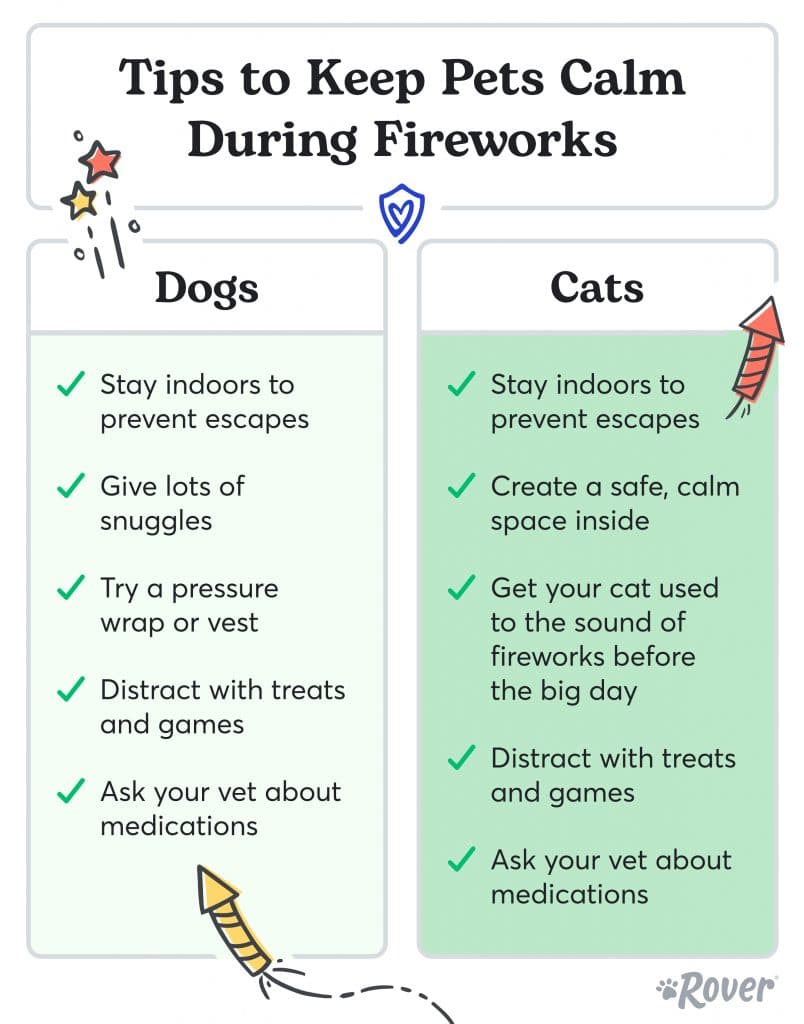
Try our trainer-approved sound desensitization protocol
One of the reasons fireworks ignite such fear in our pets is because they are an uncommon sound. To make these sounds predictable, you can follow a sound desensitization protocol to help support your dog.
Never heard of it? Neither has 60% of dog parents. In fact, only 9% of dog parents have tried this type of training with a professional.
Sound desensitization is a training program that teaches your dog: scary sounds can be predictable and fun. You’ll take your dog through beginner to advanced levels of sound exposure until they are able to handle surprise sounds. Some dogs may fully come around to thinking of surprise sounds as a party while others will exhibit far lower levels of stress than before because they remember their positive experiences.
Nicole Ellis, (CPDT-KA), advises you to play firework sounds while doing mundane things or while your pet works on a puzzle toy or tough chew. If your pet hides, tucks their tail, or starts pacing when you’re playing the sounds, you’ll need to turn the volume down — and make time for daily sound training.
Read more about pet anxiety:
Beat the Heat on Walks, Outings, and Adventures
Rushing out while the sun’s out is a common response to summer weather. But as temperatures rise, it’s important to protect your pup from the heat. More than half (54.2%) of pet parents we surveyed say they either don’t know or aren’t sure how hot it has to be for their dog to be at risk of paw burns.
Save our cheat sheet in your photo album to keep on hand on those hot days when you need a reminder of how quickly asphalt can get.
Pro-tip: If the ground is too hot for your bare feet, it’s too hot for your pet’s paws. Asphalt, in particular, can be blisteringly hot. Even a one-degree change in air temperature can mean a huge jump in asphalt surface temperature. For example: When it’s 86℉ outside, the asphalt is 135℉. If the temperature changes to 87℉, the asphalt jumps to 143℉.
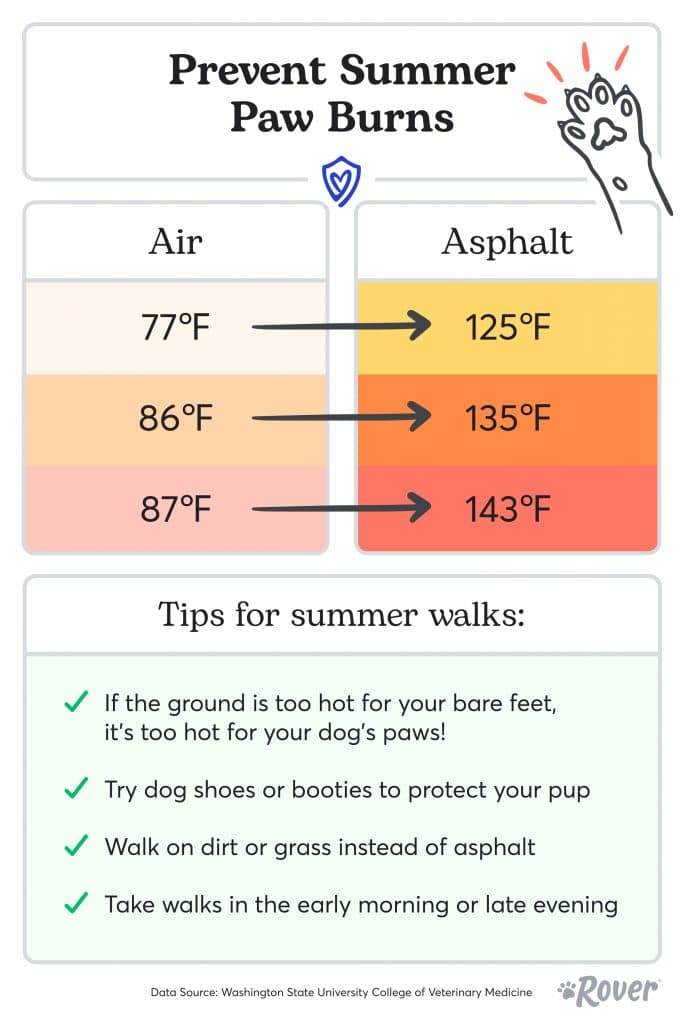
Dog shoes and booties are a good way to protect your dog’s feet. They may look a little silly, which is probably why the majority (72%) of pet parents haven’t tried them, but dog shoes play a vital role in letting your dog be a part of your summer activities.
Can’t get them shipped in time? Keep your dog’s paw cool in the summer by walking on grass or dirt. You can also time your walks to be in the early morning or late evening when it’s cooler outside.
Keeping your pets cool in health and temperature
Heat stroke in dogs and cats can be fatal, which is why it’s crucial for pet parents to be vigilant during the warmer months. The most common signs of overheating in cats and dogs include:
- heavy panting
- restless behavior
- lethargy
- redness of tongue or gums
- vomiting
- unconsciousness or stumbling gait
Both cats and dogs showing signs of heatstroke should be taken to a vet immediately. While it may feel counterintuitive, our experts say it’s important to not force your pets to drink water or cover their bodies in ice. Overcooling can cause blood vessels to constrict, which increases body temperature.
To help prevent your pet from overheating, Dr. Greenstein recommends:
- Dog cooling mats and cat cooling pads
- Cooling vests for dogs to help with thermoregulation
- Shaded outdoor tents to block the sun’s rays when outdoors
- Elevated dog beds and cat hammocks with mesh bottoms to allow for air circulation underneath
For those concerns about air quality safety during the summer, read our guide on protecting your pets during wildfire season.
Read more about keeping your pet cool:
H2O Tips: Swimming, Toxic Algae, and Water Intoxication
If you plan to bring your dog with you to the water, you’re not alone: More than half (53%) of dog parents plan on taking their pet swimming. Our experts say it’s important to always make sure your dog has a well-fitting life jacket. (Use our dog measuring guide as a quick reference for your pup.) Contrary to common belief, not every dog automatically knows how to swim, and dogs need life jackets to keep them safe when around water, even if you don’t plan on having them swim.
Want to help your dog be a safe swimmer? Save this infographic to be your quick reference guide.
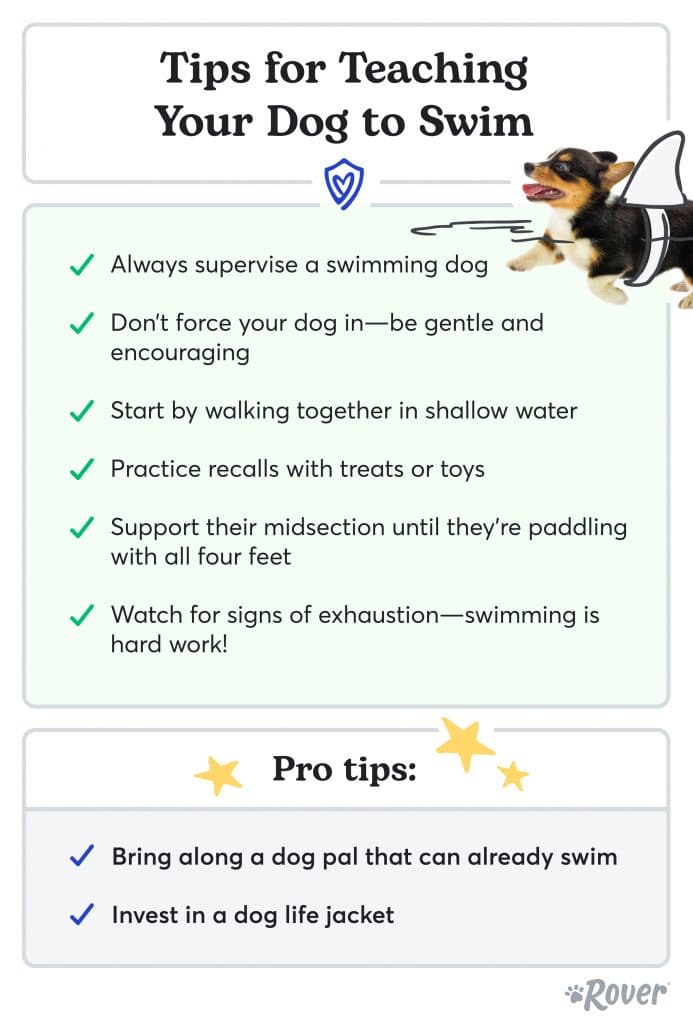
Before you take your dog to water, though, research to find out if your area’s risk for toxic algae blooms. To make sure your swimming adventures are fun, safe, and memorable, watch this video featuring Nicole Ellis, CPDT. She outlines what to look for when visiting beaches and lakes with your pup.
Keep an eye on your pets as they swim. According to Dr. Greenstein, dogs who love water are at a higher risk of water intoxication, also known as hyponatremia. Excessive drinking of water can be an emergency, leading to symptoms such as:
- Lethargy
- Dullness
- Restlessness
- Panting or drooling
- Tummy upset
- Staggering or incoordination
- Seizures
- Coma
Dogs who drink salt water, especially from the ocean, will experience the same symptoms as above, as well as increased thirst and urination.
“If you notice anything unusual during a day of swimming and water sports with your dog, especially if they’ve been drinking water from a pool or natural body of water, don’t take any chances and proceed directly to your local vet emergency hospital,” advises Dr. Greenstein. “Early intervention can make the difference between life and death in some cases.”
While cold water is not bad for dogs, excessive drinking may lead to bloat. It’s a good idea to call your dog for play breaks when outdoors or while your dog is swimming. Observe them carefully for any signs of hyponatremia or salt poisoning before letting them go back to swimming.
Another way of making sure your dog’s water adventures are fun, safe, and memorable? Keep the water party at home. Dog pool parties aren’t just a cautious suggestion. We have tips on throwing a pool party for dogs ourselves that is worth inviting your dog’s friends over for.
Read more about water safety:
10 Common BBQ Foods to Keep Away From Pets
A summer barbecue is a classic tradition that brings families, friends, and neighborhoods together—and our dogs are often invited to the party. During these gatherings, it’s important to brush up on your food knowledge about which BBQ foods to keep away from your pets. (Hint: All BBQ food, including scraps, may contain harmful ingredients like onions unless you’re confident with how it’s been cooked.)
As cute as your dog’s puppy eyes can be, it’s better to opt out of giving your pet any human food from your cookout. More than a third (38%) of dog parents say they’ve fed their dog “human food” that they realized later wasn’t safe, and only (48.3%) of dog parents say they are fairly confident about which cookout foods are safe for dogs.
How BBQ foods may harm your pets—and cost a visit to the vet
To help you navigate which foods are safe to treat your pet to, our experts compiled this list of common cookout foods to keep away from your dog. Save this list to share with friends and family so they know what not to feed your pup!

While this list isn’t exhaustive, it’s useful to keep in mind as summer heats up. Train your dog to prevent them from counter surfing.
Counter surfing can be a real problem while you’re having a party, especially if you’re distracted hosting guests. If you have an opportunistic pet, consistent training goes a long way to curb this behavior. And you’ll want to train for this way in advance! Watch this video featuring Nicole Ellis, CPDT, on how to discourage and prevent counter surfing.
Read more about doggie dining:
Navigating Travel & Separation Anxiety
Nearly 80% of pet parents are worried about their dog’s separation anxiety to some degree when they travel. These pet parents tell us they’ve noticed signs of anxiety in their dog, such as:
- Whimpering, howling, barking, or crying when alone (51.3%)
- Pacing (31.5%)
- Urinating in the house when alone (27.7%)
- Not being able to eat or play while you are gone from the room (18.9%)
- Trying to escape when alone (18.3%)
- Sweating paws when alone (4.1%)
The most common way pet parents have tried to manage their dog’s anxiety is through treats (64.7%). But for pet parents who find treats ineffective, seeking professional help may be the key.
Separation training: When to bring in a professional
Separation anxiety, like noise anxiety, is a real mental health condition for pets. Pets with true separation anxiety— the inability to settle or calm themselves when away from their pet parents or left alone—are in a panic state. Without proper desensitization, pets can develop more triggers, such as keys, wallets, and shoes, that lead to longer periods of anxiety.
If your pet immediately shows signs of stress or unhappiness before you leave the house or is unable to be by themselves for more than 60 seconds, you may want to enlist the help of a professional trainer.
Research shows the best treatment for separation anxiety is through desensitization, counter conditioning, and medication in the early stages of training. Nicole Ellis, CPDT-KA, mentions that a mistake most pet parents make is pushing their dog too fast and far after a few successes. If your pet has successfully stayed calm after a long separation, she advises giving them an easy win by leaving for a shorter amount of time before increasing difficulty again.
Instead of going on a week-long trip after spending every day together, slowly increase the time you spend apart before a trip. This way, your dog is used to being without you, even with a sitter around.
Other management strategies to increase your dog’s comfort level include:
- Crate training games to make their crate a safe, happy space for them to relax in
- Providing them with distractions so they don’t notice you’re gone. Just be sure they are toys your dog can be safely left alone with first.
- Leaving the TV or radio on to create a calming white noise effect and reduce the chance they’ll bark at every little sound
- Booking your sitter for a few prep sessions to get your dog familiar with them and your sitter familiar with their routine






